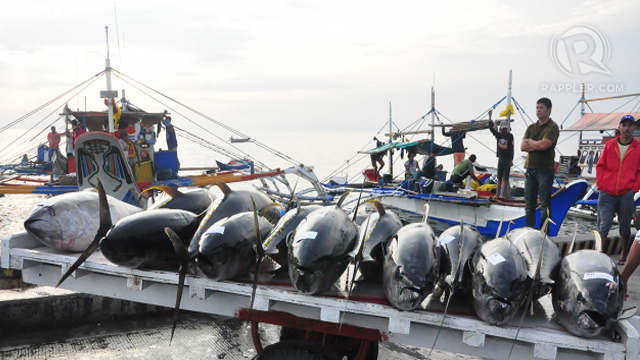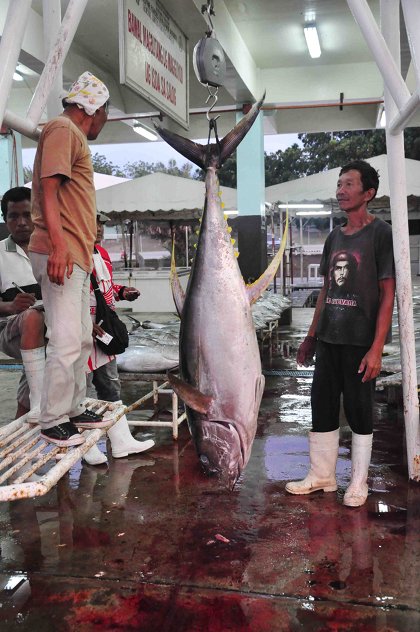SUMMARY
This is AI generated summarization, which may have errors. For context, always refer to the full article.

GENERAL SANTOS CITY, Philippines – Some 36 tuna catcher vessels will set sail from the port of General Santos City on September 25 where they will head to a pocket of seas that has been closed to tuna fishing since 2010 but recently opened exclusively for Filipino fishermen.
A sendoff ceremony will be held at the General Santos City Fishport complex, according to Joaquin Lu, president of the Socsksargen Federation of Fishing and Allied Industries Inc. (SFFAII).
It will mark the return of Filipino tuna fisherman in an area about 590,000 square kilometers north of Papua New Guinea and east of Indonesia known as Pocket 1 among member countries of the Western and Central Pacific Fisheries Commission (WCPFC).
The area is believed to be one of the strategic migratory paths of tuna and tuna-like species.
In 2009, WCPFC agreed to close the area following steady decline in tuna catches worldwide. It took effect in 2010.
The Philippines however requested WCPFC to open the area to Filipino fishermen citing far reaching ramifications of the closure order to the country’s tuna industry.
The Philippines is a member of WCPFC and a signatory to the ban.
The Philippine government even cited a violent incident early this year when rival fishing group clash over access to tuna fishing grounds. Fifteen fishermen were killed in the incident.
Last March, the WCPFC granted the Philippines exclusive access to the said rich tuna fishing ground.
Lu said at least 50 Filipino tuna catchers have applied for the right to fish in second largest pocket of seas covered by the WCPFC ban.
As a result, Lu said they will be raffling the 36 slots from among the applicants.
The fishermen are expected to reach the fishing ground on October 1, in time for the lifting of a separate but related annual 3-month ban on tuna fishing using fish aggregating devices (FADs).
Additionally, Filipino tuna catchers are only allowed 40 sets of FADs each.
FADs are Filipino inventions which attract school of fish underneath a shaded area composed of a large bundle of buri (a kind of sturdy palm) leaves held on by an anchor below and kept afloat by a steel buoy above the surface of the seas.
FADS have been labeled as a destructive method of fishing but are widely considered as appropriate and efficient method of catching tuna and tuna-like specie.
These FADs, first deployed by Filipino tuna fishermen in the early 60s at the mouth of Sarangani Bay, have evolved from bamboo raft floaters to the more durable steel tubes.
Lu said the opening of Pocket 1 is exclusive for Philippine-based tuna catchers and will have to comply with stringent WCPFC regulations.
Among them is vessel monitoring system where these tuna catchers will have to plot their location for easy identification. They will also have to allow observers on board and will have to report the volume, time and origin of their catches. In addition, the catchers will have to be landed exclusively in General Santos City only.
The WCPFC also limited Filipino tuna catchers to medium sized fishing vessels with grass tonnage not exceeding 250 tons. These vessels should not also have refrigerated hulls.
“Only ice chiller hulls,” Lu further disclosed. 
General Santos City is host to 6 of the country’s 7 tuna canning plant and is widely acknowledged as the country’s tuna capital.
The tuna industry has become a major economic lifeline of this southern city with annual catch averaging 5 million metric tons and generating more than US$250 million in export revenues.
Annual tuna landings have however steadily declined in recent years due to overfishing. – Rappler.com
Add a comment
How does this make you feel?
There are no comments yet. Add your comment to start the conversation.